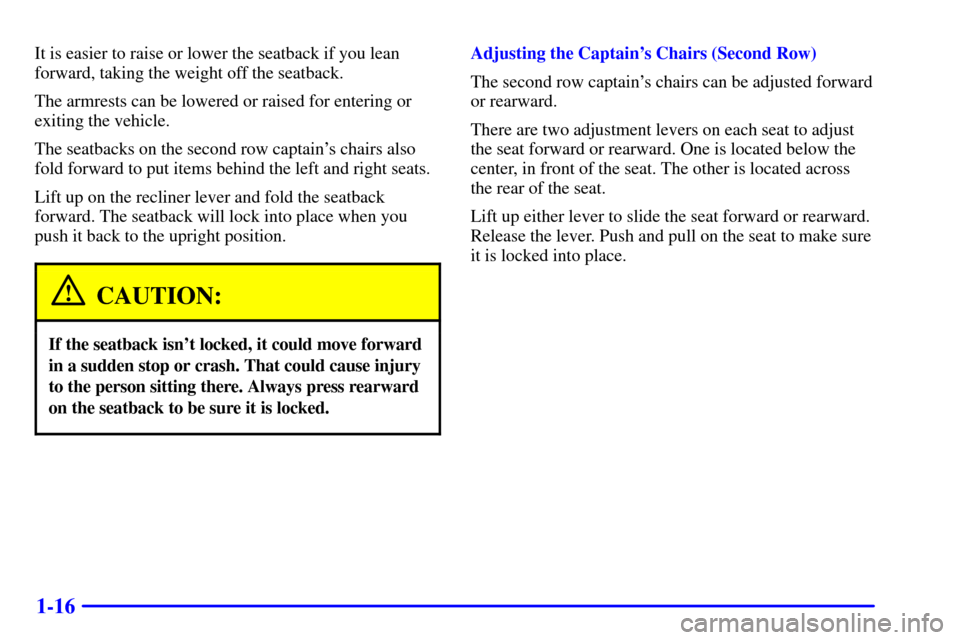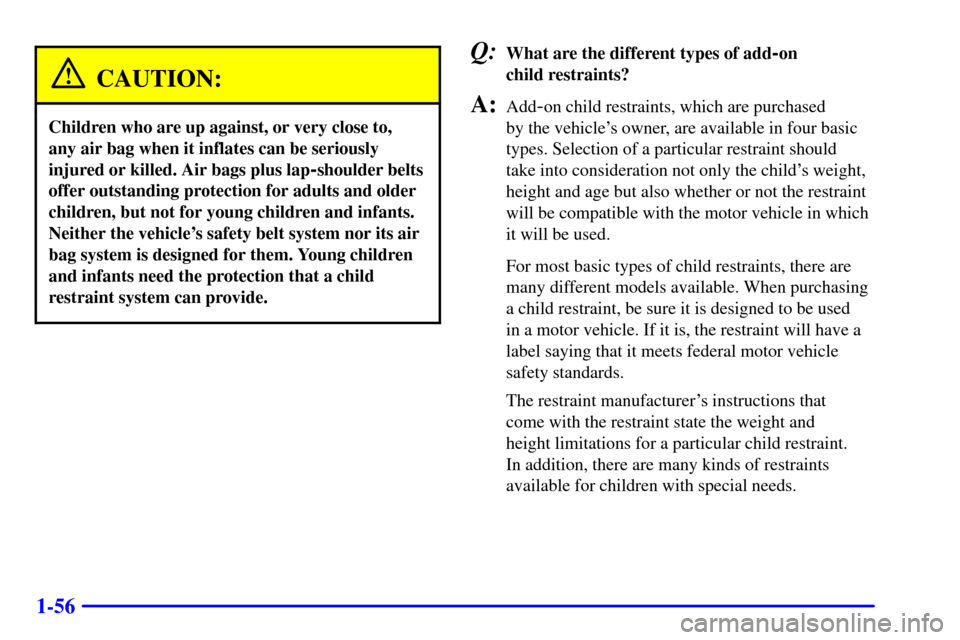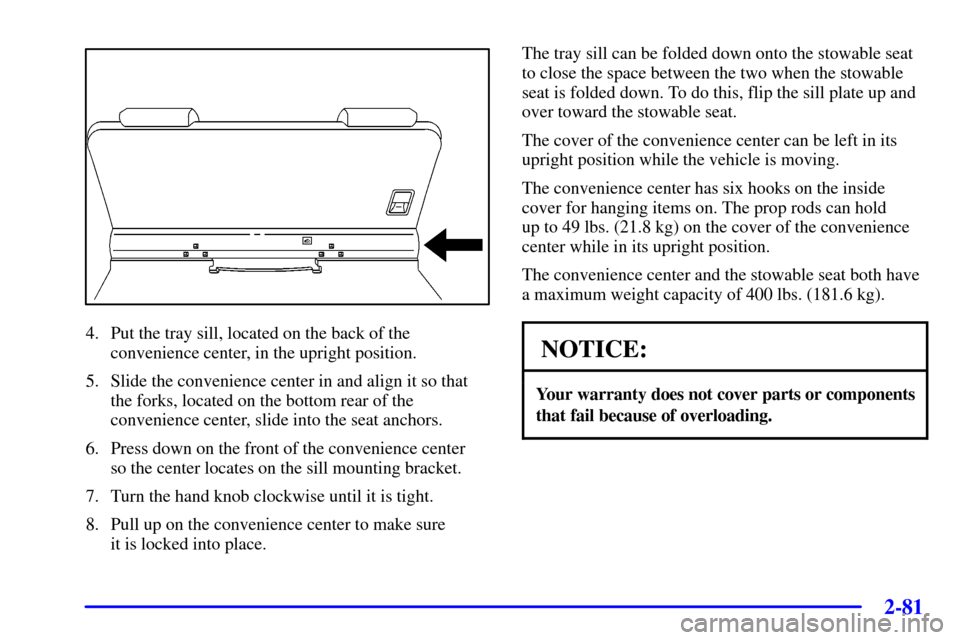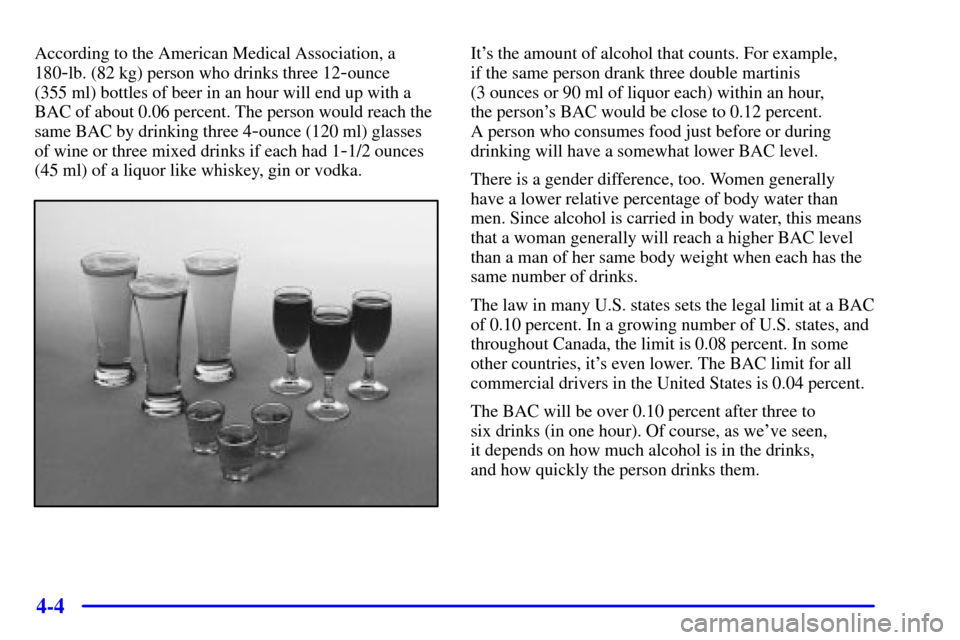Page 17 of 436
1-5 Heated Front Seats (Option)
The heated seat switch is
located in the instrument
panel switchbank. This
feature will quickly heat
the lower cushions and
lower back of the driver's
and front passenger's seats
for added comfort.
The left switch is for the driver's seat and the right
switch is for the front passenger's seat. Press the bottom
of the switch to turn the heater on. The indicator light on
the switch will glow. Press the top of the switch to turn
the heater off. The heated seat switch will turn off when
the ignition is turned to OFF and resume operation when
the ignition is turned to RUN, unless the switch is
manually turned off.
Reclining Front Seatbacks
All front seats recline.
To adjust the seatback, pull up on the lever located on
the outboard sides of both the driver's and the front
passenger's seat. It is easier to recline the seat if you
lean forward, taking your weight off the seatback.
Page 28 of 436

1-16
It is easier to raise or lower the seatback if you lean
forward, taking the weight off the seatback.
The armrests can be lowered or raised for entering or
exiting the vehicle.
The seatbacks on the second row captain's chairs also
fold forward to put items behind the left and right seats.
Lift up on the recliner lever and fold the seatback
forward. The seatback will lock into place when you
push it back to the upright position.
CAUTION:
If the seatback isn't locked, it could move forward
in a sudden stop or crash. That could cause injury
to the person sitting there. Always press rearward
on the seatback to be sure it is locked.
Adjusting the Captain's Chairs (Second Row)
The second row captain's chairs can be adjusted forward
or rearward.
There are two adjustment levers on each seat to adjust
the seat forward or rearward. One is located below the
center, in front of the seat. The other is located across
the rear of the seat.
Lift up either lever to slide the seat forward or rearward.
Release the lever. Push and pull on the seat to make sure
it is locked into place.
Page 68 of 436

1-56
CAUTION:
Children who are up against, or very close to,
any air bag when it inflates can be seriously
injured or killed. Air bags plus lap
-shoulder belts
offer outstanding protection for adults and older
children, but not for young children and infants.
Neither the vehicle's safety belt system nor its air
bag system is designed for them. Young children
and infants need the protection that a child
restraint system can provide.
Q:What are the different types of add-on
child restraints?
A:Add-on child restraints, which are purchased
by the vehicle's owner, are available in four basic
types. Selection of a particular restraint should
take into consideration not only the child's weight,
height and age but also whether or not the restraint
will be compatible with the motor vehicle in which
it will be used.
For most basic types of child restraints, there are
many different models available. When purchasing
a child restraint, be sure it is designed to be used
in a motor vehicle. If it is, the restraint will have a
label saying that it meets federal motor vehicle
safety standards.
The restraint manufacturer's instructions that
come with the restraint state the weight and
height limitations for a particular child restraint.
In addition, there are many kinds of restraints
available for children with special needs.
Page 146 of 436

2-54 Torque Lock
If you are parking on a hill and you don't shift your
transaxle into PARK (P) properly, the weight of the
vehicle may put too much force on the parking pawl in
the transaxle. You may find it difficult to pull the shift
lever out of PARK (P). This is called ªtorque lock.º
To prevent torque lock, set the parking brake and then
shift into PARK (P) properly before you leave the
driver's seat. To find out how, see ªShifting Into
PARK (P)º in the Index.
When you are ready to drive, move the shift lever out of
PARK (P) before you release the parking brake.
If torque lock does occur, you may need to have
another vehicle push yours a little uphill to take some
of the pressure from the parking pawl in the transaxle,
so you can pull the shift lever out of PARK (P).
Shifting Out of PARK (P)
Your vehicle has an automatic transaxle shift lock
control system. You have to fully apply your regular
brakes before you can shift from PARK (P), when the
ignition is in RUN.
As you step on the brake pedal, while in PARK (P),
you may hear a click from the solenoid of the system.
This ensures that the system is operating properly.
See ªAutomatic Transaxle Operationº in the Index.
If you cannot shift out of PARK (P), ease pressure on
the shift lever by pushing it all the way into PARK (P)
as you maintain brake application. Then move the shift
lever into the gear you want. If you ever hold the brake
pedal down but still can't shift out of PARK (P), try this:
1. Turn the ignition key to OFF.
2. Apply and hold the brake until the end of Step 4.
3. Shift to NEUTRAL (N).
4. Start the engine and then shift to the drive gear
you want.
5. Have the vehicle fixed as soon as you can.
Page 173 of 436

2-81
4. Put the tray sill, located on the back of the
convenience center, in the upright position.
5. Slide the convenience center in and align it so that
the forks, located on the bottom rear of the
convenience center, slide into the seat anchors.
6. Press down on the front of the convenience center
so the center locates on the sill mounting bracket.
7. Turn the hand knob clockwise until it is tight.
8. Pull up on the convenience center to make sure
it is locked into place.The tray sill can be folded down onto the stowable seat
to close the space between the two when the stowable
seat is folded down. To do this, flip the sill plate up and
over toward the stowable seat.
The cover of the convenience center can be left in its
upright position while the vehicle is moving.
The convenience center has six hooks on the inside
cover for hanging items on. The prop rods can hold
up to 49 lbs. (21.8 kg) on the cover of the convenience
center while in its upright position.
The convenience center and the stowable seat both have
a maximum weight capacity of 400 lbs. (181.6 kg).
NOTICE:
Your warranty does not cover parts or components
that fail because of overloading.
Page 175 of 436
2-83
NOTICE:
Loading cargo that weighs more than 150 lbs.
(68 kg) on the luggage carrier may damage
your vehicle.
When you carry cargo on the luggage carrier
of a proper size and weight, put it on the slats,
as far forward as you can. Then slide the
crossrail up against the rear of the load, to help
keep it from moving. You can then tie it down.
Don't exceed the maximum vehicle capacity when
loading your vehicle. For more information on vehicle
capacity and loading, see ªLoading Your Vehicleº in
the Index.
Page 260 of 436

4-3
Drunken Driving
Death and injury associated with drinking and driving
is a national tragedy. It's the number one contributor to
the highway death toll, claiming thousands of victims
every year.
Alcohol affects four things that anyone needs to
drive a vehicle:
�Judgment
�Muscular Coordination
�Vision
�Attentiveness.
Police records show that almost half of all motor
vehicle
-related deaths involve alcohol. In most cases,
these deaths are the result of someone who was drinking
and driving. In recent years, about 16,000 annual motor
vehicle
-related deaths have been associated with the use
of alcohol, with more than 300,000 people injured.Many adults
-- by some estimates, nearly half the
adult population
-- choose never to drink alcohol,
so they never drive after drinking. For persons under 21,
it's against the law in every U.S. state to drink alcohol.
There are good medical, psychological and
developmental reasons for these laws.
The obvious way to solve the leading highway safety
problem is for people never to drink alcohol and then
drive. But what if people do? How much is ªtoo muchº
if the driver plans to drive? It's a lot less than many might
think. Although it depends on each person and situation,
here is some general information on the problem.
The Blood Alcohol Concentration (BAC) of someone
who is drinking depends upon four things:
�The amount of alcohol consumed
�The drinker's body weight
�The amount of food that is consumed before and
during drinking
�The length of time it has taken the drinker to
consume the alcohol.
Page 261 of 436

4-4
According to the American Medical Association, a
180
-lb. (82 kg) person who drinks three 12-ounce
(355 ml) bottles of beer in an hour will end up with a
BAC of about 0.06 percent. The person would reach the
same BAC by drinking three 4
-ounce (120 ml) glasses
of wine or three mixed drinks if each had 1
-1/2 ounces
(45 ml) of a liquor like whiskey, gin or vodka.
It's the amount of alcohol that counts. For example,
if the same person drank three double martinis
(3 ounces or 90 ml of liquor each) within an hour,
the person's BAC would be close to 0.12 percent.
A person who consumes food just before or during
drinking will have a somewhat lower BAC level.
There is a gender difference, too. Women generally
have a lower relative percentage of body water than
men. Since alcohol is carried in body water, this means
that a woman generally will reach a higher BAC level
than a man of her same body weight when each has the
same number of drinks.
The law in many U.S. states sets the legal limit at a BAC
of 0.10 percent. In a growing number of U.S. states, and
throughout Canada, the limit is 0.08 percent. In some
other countries, it's even lower. The BAC limit for all
commercial drivers in the United States is 0.04 percent.
The BAC will be over 0.10 percent after three to
six drinks (in one hour). Of course, as we've seen,
it depends on how much alcohol is in the drinks,
and how quickly the person drinks them.